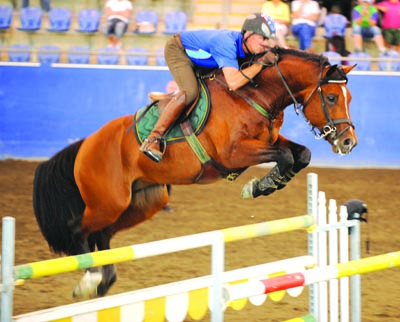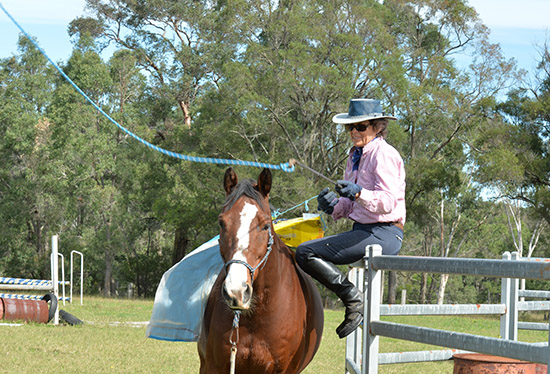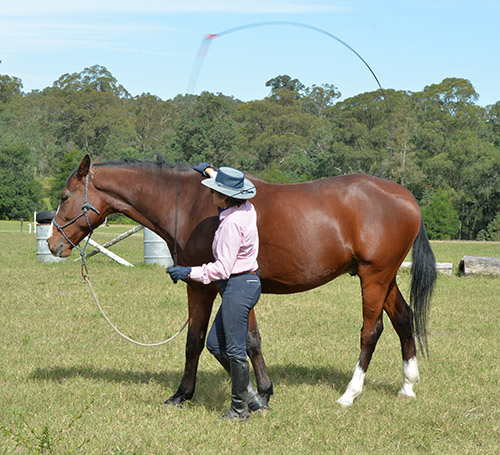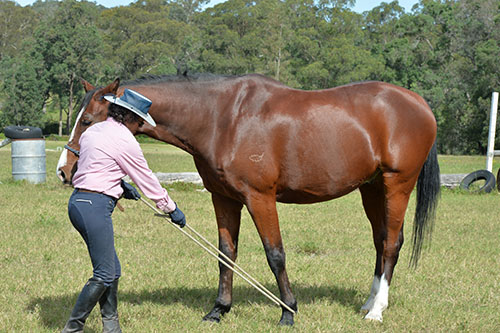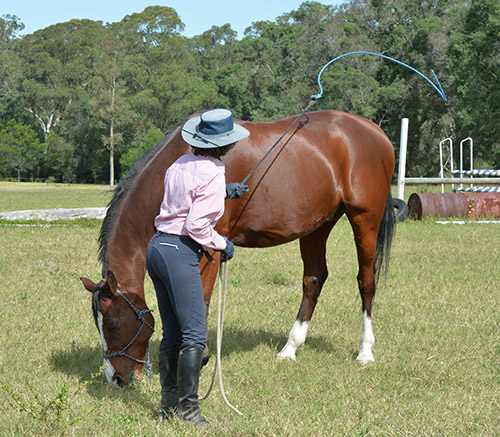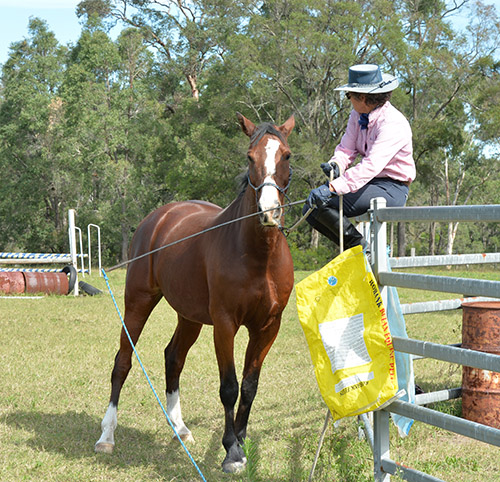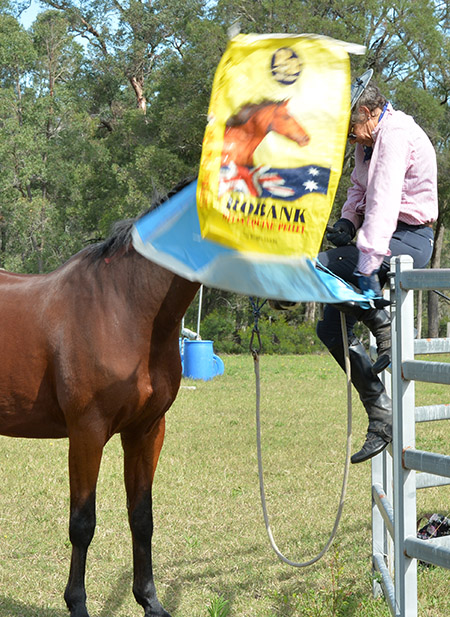Story – Chris Hector & Photos – Roz Neave
I must confess when it comes to the training of the horse, I shy away from the ‘alternative’, it’s just that so far as I can see, the classical system in its modern version aka the German Principles, does an absolutely wonderful job, and every time I’ve tried to open my mind to the alternative, I’ve found myself being ear-bashed by a loud mouthed salesman flogging the bleeding obvious. Which is why I was intrigued that a serious rider, competitor, trainer, and more importantly, deep thinker about matters equestrian like Colleen Brook, should dabble in these dark arts…
So there I was standing in the middle of Colleen’s paddock watching her assemble her collection of whips, wavey things and bags and blankets with her long suffering 6 year old.
Bamboo cane used for in-hand work…
Colleen certainly comes well equipped for the task: “I have three different sorts of whips. This bamboo whip, Jose Mendez used at the Horseman’s Rendevous, he says he buys them at Bunnings. Jose’s in hand work is marvellous, not many people here in Australia have those skills. The second stick is a carrot stick and it is a bit longer than a driving whip with a string rope about 1.20m long. The horse gets used the string landing softly on them like a tail and the horses like the feel. You can use this rope, it’s a bit heavier to do the same thing.”
more from Colleen follows
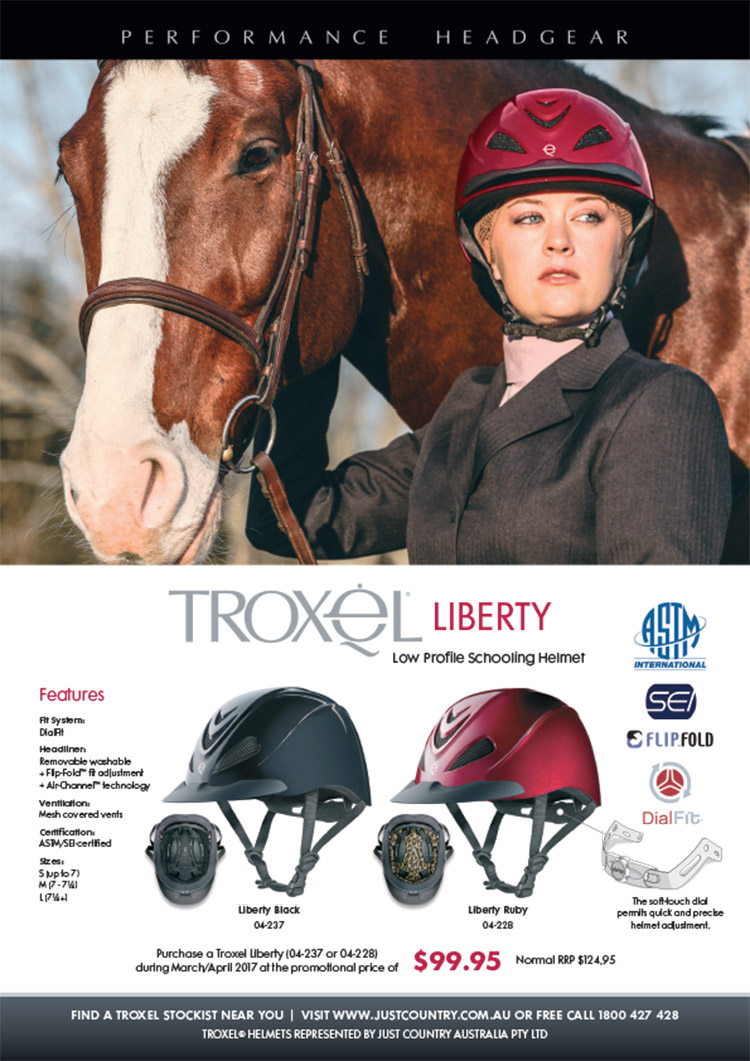
And right now Colleen is waving one of those whips around her head, and Corvette is totally ignoring her…
Walking beside horse swinging lunge whip. It sounds whizzier and it is a step from the carrot stick. If you thick horses learn to ignore whips, if you do this, nothing could be further from the truth. They become very light to the whip signal. Just ask Guy McLean, the Dans, Kel Jeffrey from the 50’s, Steve Brady, Steve Jeffries, and so on…
“I can wave the whip around, but because I am not looking at him, he knows it is nothing to do with him at the moment–If my body language changes and I look at him with intent he knows, to be ready to move.”
The bay may look super laid back in the face of all this ‘alternativeness’, but apparently this was not always the case:
“This is a sensitive horse and he hasn’t been easy. So before I get on him in a strange place, I use this technique to make him feel comfortable, then I can feel comfortable at a show that if something goes wrong, he is not going to lose it, because in the beginning, he had been known to lose it. The guy who started him off, recognized that he was sensitive, and he started doing this and I’ve kept on with it. If they lose their cool, it’s not very nice if you are sitting on them. Anyone who starts horses for a living should be doing this sort of thing really well, and teach horses to yield to the pressures. Corvette is much easier these days.”
Teaching him about rope pressure…
I’m reminded of one of the great lines of English literature, Gully Jimson remarked that ‘it was like farting annie laurie through the key hole – very clever, but was it art…’
“Why do it? Is that what you are saying? For a start, it’s good fun and you get a lot closer to how they think. You can do things that you probably didn’t think you’d need to, but it is SAFE to have horses light to an easy pressure to move them around, they lead up well, they stop, they back. They are much easier to handle because they have a better understanding of what you are after, and the basics are the same: calm, forward and straight.”
“There is not yet a culture of the ground skills in Australia, the ground skills culture is small here so far. I’m keen to learn more about that and get horses going in hand. I watch videos and I see people do it, and I think, that’s pretty cool, I’d like to be able to do that.”
more exercises follow
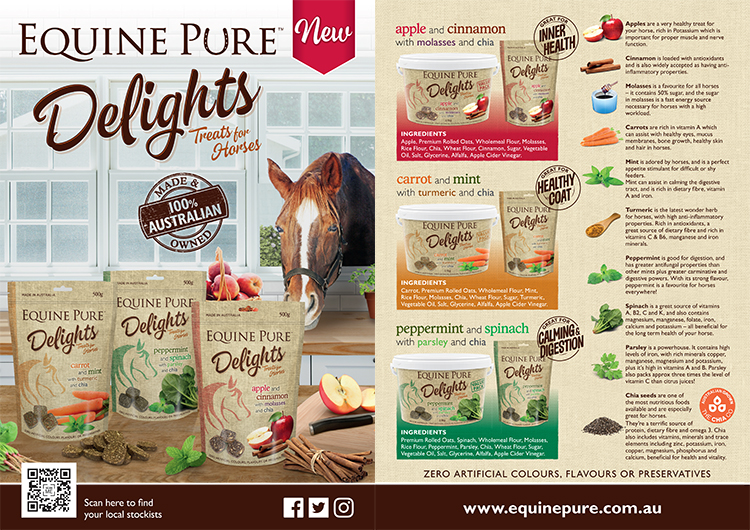
Friendly games. Step one every day, Pat Parelli says, and in the classic books on horse training, they say, ‘Start with easier lessons or something the horse knows well, and gradually move on to the new or harder exercises…’
“It’s all about control. Push them sideways to open a gate, I know not a lot of competition horses open gates, but it is moving away from the leg, and it is patience. It is good for the rider as well because it teaches you to go in progressive steps. Most of the problems we have in horse training are because we go too quickly to an end, to what we are trying to achieve, and we don’t take slow enough steps in the beginning. We don’t take the learning phase into consideration as much as we ought. We say today two plus two equals four, and tomorrow, two times four, and the poor old horse is struggling to keep up because we’ve skipped too many steps in our training.”
“When I go around the country teaching, that’s what I see. If the horse doesn’t get it, well you just kick it up the ribs and jerk it in the mouth and bully it – hey I said now! That’s not training, that’s just bullying the horse. We have to make sure we are clearly aware of the progressive steps, and that’s what I see in my ‘wacko’ stuff. Throwing a tarp over a horse, is it going to make it jump higher? No, it isn’t but I believe our duty to the horse is to educate them to all sorts of different situations. Much better for our safety as well of course. We all talk about this wonderful partnership we have with our horses – I think a lot of riders are dreaming. The interaction you have with the horses when you do this stuff is great. A lot of people think giving the horse a carrot is interacting, but it’s not, it’s a free lunch, they don’t have to do anything for it. Ground skills are not circus or over-controlling, it’s just a change, of not being so narrow in the focus of your training. As far as I know, no horse has ever gone backwards doing this stuff.”
Here I am, sitting on the fence with my props…
How did you get started on ‘this stuff’?
“Same old story, difficult horse. He wouldn’t stay down in my jumping paddock, he’d whinny, then porpoise leap his way back to the yard gate… with me on his back! That’s 800 metres, and I couldn’t do anything about it. It was a crossbred horse, big strong thing, and I couldn’t do anything. He was quite nicely schooled on the flat, but anything out of that arena, he couldn’t cope. So if he wouldn’t stay down in the jumping paddock there wasn’t a lot I could do with him.”
Colleen found a solution
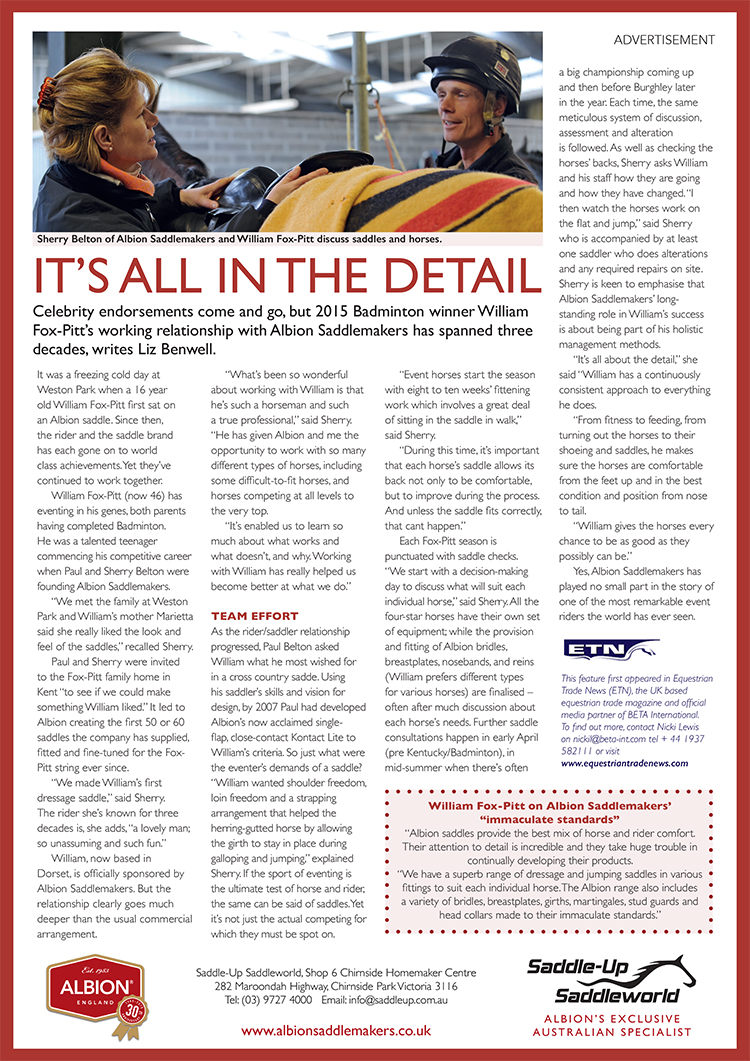
RING – Saddle-Up 03 9727 400
“My farrier at the time was a Parelli instructor, Mark Rodney, and he was trying to entice me into doing his thing, so I said, right, here’s your chance! He definitely made a big difference to the horse. I could ride him down in the jumping paddock without being dragged back up to the stables. The horse was going to be sold, and Mark ended up buying him and having a great time with him.”
“That got me really interested. He didn’t have to beat it up to stop it doing the wrong thing. In the old days, when you had a tough horse you got your local hit man in to rough them up a bit – you’re not going to do that again – and that would last a month, then you’d have to ring him up and say, come out, it’s doing it again.”
“I was interested. Mark was able to turn that horse around without getting rough with it…”
“I went to one of Pat and Linda Parelli’s clinics, 30 people there, wielding ropes and sticks. My horse was bug-eyed for the first day, but after five days – although we didn’t seem to do a lot, it wasn’t working them into the ground by any measure – we had a session in the morning and a session in the afternoon, and we did two or three things a session, 30 people and one instructor, and the horse came back from those five days, just so relaxed and switched on.”
“ The ground skills were great and the riding wasn’t on the bit like we would do. There was a lot of just teaching horses to go where they were asked, to stay calm, going under things, through things, up and down, anything that a young horse should learn.”
“I had a great time and thoroughly enjoyed it – and the way they taught was totally different, it was very low key, and there was a lot of self-discovery about it. You talked about it. It was demonstrated. You had a go. The teacher just cruised around, pointing out a few things here and there. I quite enjoyed the style of teaching, I saw how good the method was. You weren’t bombarded with information, you were allowed to go a little away from the mark and it wasn’t the end of the world.”
Throwing bags, horse not worried, rope loose…
“I think as a coach you get to a certain skill level, and when you start to teach people, you expect too much of your students and you don’t allow them to go wrong, going wrong is definitely part of learning. We have all done lots of things we shouldn’t have done, and we’ve learnt from the experience. Of course, we all love a trainer on the ground and that’s the best way to become highly skilled, but self-discovery time is also very important. I don’t care if people go a bit wrong here and there, as long as they keep seeking the information, and keep wanting to fix things.”
You started with Parelli, that is respectable enough, are there other murky depths of the alternative culture that you have dived into?
“Is Georgia Bruce murky?”
No Georgia Bruce is wonderful…
“I’ve attended a couple of clicker training sessions and again, I thought the process that Georgia had, the way she taught… you asked the horse to do this, click, can he do that again? Yes. Then the next thing, we add a little bit, we add a little bit, we add a little bit, and I very much like that because it made sense to me – this is how it should be, easy to learn. Lots of people ask me how does clicker training work whilst you ride. If you are continually stopping to reward the horse what is the point. Georgia has a good method and she makes it easy for the horse to follow instructions and help make the rider consistent. The common theme is make it easy for the horse. Okay once you are experienced you can be thinking about a hundred things at once, you have your position, you don’t have to be reminded too much, it is only small things – but when you are learning, you can’t fire off a hundred instructions and expect to succeed, but we all do that when we are teaching. It was the way of teaching that got my attention.”
“Why do we do it? I am interested in the history of training and love watching those people who can do different things. Also with the pressure of competition you need a break from the pressure, and the horses need a break too. Not holidays, but a break from the weekly grind of competition, we have to do a good job and make it not like the weekly grind, and that is the art of training: how to make those little steps all count to arrive at the goal at the end, without making the horse, or the rider for that matter, feel too much under pressure.”
So there you are. Convinced? Ready to twirl a rope or two… seems it can’t hurt and it might just open new doors.
Thinking about what stallion to use this season? How about one a stallion with the best available bloodlines and you can buy frozen semen here in Australia? Conquistador is as close to a full brother to Cornet Obolensky as you can get – 7/8ths Plus he has sired winners, and is a winner himself. Contact Helen Chugg – www.diamondfarm.com.au or ring 0438 274 170
